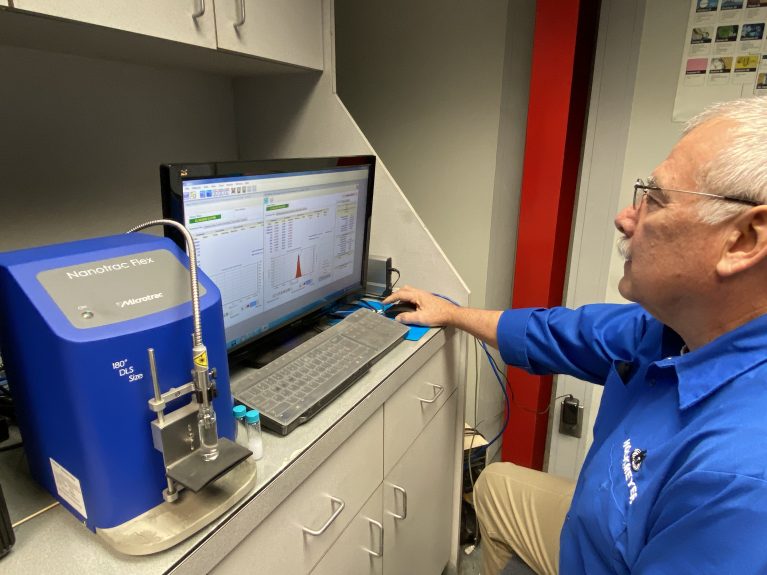
Dispersers and Immersion Mills
The Crucial Role of Temperature in Mixing, Dispersion, and Milling Processes
Temperature is a frequently underestimated variable in industrial operations, yet it is pivotal to the mixing, dispersion, and milling outcomes. The precise control of temperature is paramount, as it can profoundly affect product quality, process efficiency, and safety measures, ultimately shaping the success of these industrial endeavors. The key to success in any and all of these manufacturing processes? Selecting the right milling, mixing, and dispersion equipment for the job.
The Basics of Mixing, Milling, and Dispersion
Mixing, dispersion, and milling are three fundamental manufacturing techniques that are essential in many industries today.
Mixing focuses on amalgamating various substances to create a consistent and homogeneous blend. Manufacturers rely heavily on mixing to ensure uniformity and reliability in their products.
Dispersion is a technique that breaks particle aggregates with the goal of evenly distributing solid materials into liquids. This process is indispensable in crafting stable suspensions or emulsions, particularly in industries like cosmetics, paints, coatings, and pharmaceuticals, where uniformity and stability are paramount for product quality and performance.
Lastly, milling is a mechanical process employed to reduce particle size and deagglomerate particle clusters. This method finds wide applications in sectors such as inks, paints, personal care, pharmaceuticals, food, and chemicals, contributing to product uniformity and optimal material properties.
Temperature’s Impact
Temperature plays a critical role in these processes, impacting various aspects of material processing and the quality of the final product. In fact, many materials, such as pigments, polymers, and certain metals, exhibit temperature-dependent behaviors, making reliable temperature control essential to achieve the highest-quality results.
The effects of temperature can be felt through various critical aspects of these processes. One key consideration is viscosity, the measure of a fluid’s resistance to flow, which can be intricately tied to temperature. As temperatures rise, the viscosity of most liquids generally decreases, which can result in smoother substance blending, reduced process times, and enhanced overall efficiency. These gains in efficiency can translate to increased batch turnover and improved bottom-line results. In mixing processes involving chemical reactions, temperature control is pivotal, ensuring reactions occur at the desired rate and avoiding unwanted byproducts.
Precise temperature control also optimizes reaction kinetics, fostering high-quality product production and ensuring consistency from batch to batch. Additionally, temperature influences material solubility, with applications like in the pharmaceutical industry, where heating solvents can enhance the solubility of certain drugs. This temperature-induced improvement facilitates a more effective mixing process, leading to a uniform distribution of active ingredients and elevating product quality.
It also significantly influences the dispersion process as well, particularly when the goal is stable dispersions in suspensions or emulsions. It plays a vital role in shaping the interaction between the dispersed and continuous phases, as elevating the temperature can enhance stability by boosting the solubility of certain components in the continuous phase and even affect the size and distribution of particles within a dispersion.
In some scenarios, temperature control can prevent the agglomeration of particles, while in others, a controlled increase in temperature may be necessary to reduce viscosity, enhance flow properties, and enable optimal particle dispersion. Furthermore, temperature influences the rheological behavior of dispersions, with changes in viscosity affecting handling, pumping, and filling.
With all of this in mind, it’s easy to see why precise temperature control remains pivotal in ensuring materials maintain their intended rheological properties throughout production.
The HRX Temperature-Regulated Rotor-Stator: A Leap Forward in Temperature Control
Since Hockmeyer Equipment Corporation’s founding in the mid-1930s, the company has been known for creating innovative new state-of-the-art immersion media mills, dispersers and agitators, and other mixing equipment. Today, Hockmeyer continues to lead the industry thanks to the unmatched performance of its continuously evolving technology and customer service.
In fact, Hockmeyer recently introduced a brand-new equipment line: the HRX Rotor-Stator. This patented technology achieves particle deagglomeration and dispersion while efficiently controlling the material’s temperature. With the addition of an auger and a sweep blade, this machine can even process unlimited viscosity ranges.
The temperature is regulated via a jacketed dome, which combined with a jacketed vessel, adds another performance improvement level for maximum operation control for temperature-sensitive applications. The high-efficiency rotor can also be teamed with dynamic stator designs with openings in different sizes and shapes to enable rapid agglomerate and particle-size reduction. This revolutionary, cutting-edge technology represents an incredible advance in temperature control. It is available as a stand-alone disperser, a component on a multi shaft mixer, or in a concentric design.
If you’re interested in learning more, contact our team today! Our team of experts is ready to help and happy to answer any and all questions you may have.

